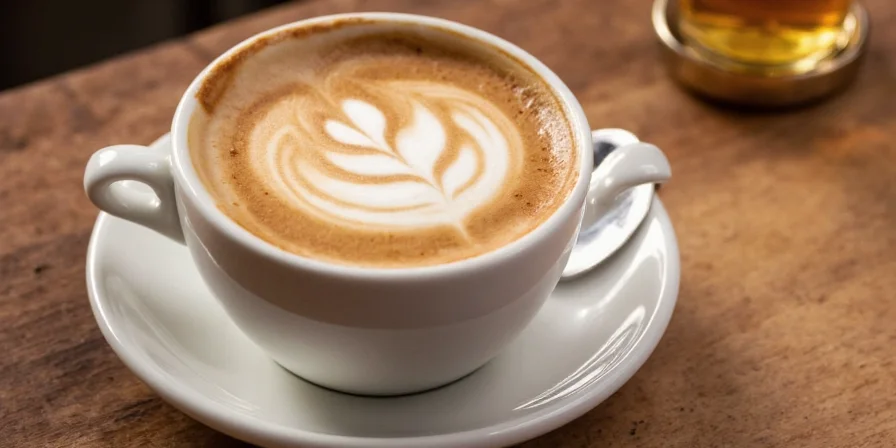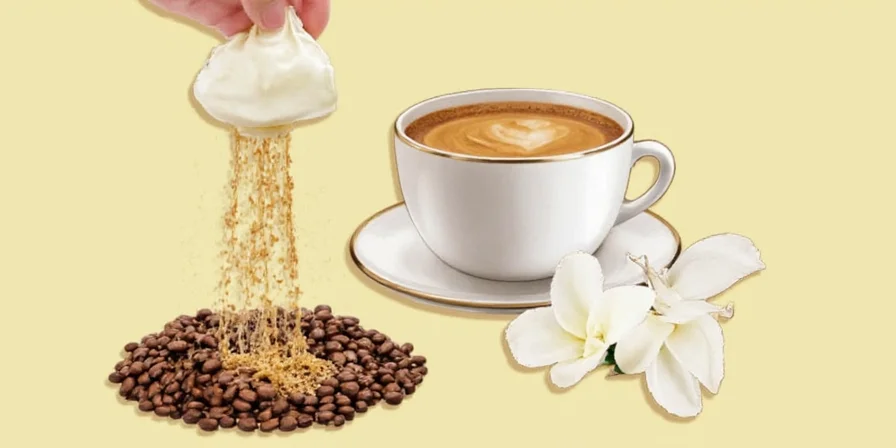Table of Contents
- The Sweet Truth: Why Vanilla Is So Expensive
- Step 1: Meet Vanilla’s Finicky Flower — The Orchid
- Step 2: Hand-Pollination — Because Nature Isn’t Always Cooperative
- Step 3: A Long, Labor-Intensive Curing Process
- Step 4: Climate & Crop Failures — Nature Strikes Back
- Step 5: Rising Demand Meets Limited Supply
- Tip #1: Try Vanilla Extract Alternatives
- Tip #2: Make Your Own Vanilla Extract at Home
- Tip #3: Use Vanilla Beans Wisely — Every Scrap Counts!
- Tip #4: Understand Labeling — Pure vs. Imitation
- Tip #5: Buy in Bulk (But Choose Wisely)
- Frequently Asked Questions About Vanilla Pricing
- Conclusion: Embrace Vanilla’s Value and Flavor Smartly
The Sweet Truth: Why Vanilla Is So Expensive
This guide delivers actionable insights for home bakers and food enthusiasts seeking to understand vanilla's premium pricing while implementing cost-effective strategies without sacrificing quality.
If you’ve ever stood in the spice aisle and gasped at the price of a single vanilla bean, you’re not alone. Vanilla isn’t just another spice—it’s a luxury item. In fact, it’s the second-most expensive spice in the world after saffron.

Step 1: Meet Vanilla’s Finicky Flower — The Orchid
Vanilla comes from orchids—specifically, the Vanilla planifolia species. These flowers are beautiful but temperamental. They bloom for only one day each year. If they aren’t pollinated during that window, no vanilla pods will grow.
This natural limitation already narrows the potential yield before any human labor even begins.

Step 2: Hand-Pollination — Because Nature Isn’t Always Cooperative
In most parts of the world, the specific bee that naturally pollinates vanilla flowers doesn’t exist. That means farmers must do the job manually—a process called hand-pollination.
Each flower must be carefully fertilized by hand using a small stick or toothpick. It’s slow, meticulous work. One farmer can only pollinate around 1,000 flowers per day, which might sound like a lot until you realize how few survive and mature into usable beans.

Step 3: A Long, Labor-Intensive Curing Process
Once harvested, the green vanilla beans go through a curing process that can take up to six months. This involves sweating, drying, and aging to develop their signature aroma and flavor.
Here’s what happens:
- Blanching: Pods are briefly dipped in hot water to stop growth.
- Sweating: Wrapped in cloth and placed in boxes to ferment, developing rich flavor compounds.
- Drying: Laid out in the sun and air-dried over several weeks.
- Aging: Stored in sealed containers for months to fully mature.
All of this requires skilled labor, constant monitoring, and proper storage facilities.

Step 4: Climate & Crop Failures — Nature Strikes Back
Vanilla is mostly grown in tropical regions like Madagascar, Mexico, and Tahiti. These areas are prone to cyclones, droughts, and other climate-related disasters.
For example, Cyclone Enawo in 2017 destroyed nearly half of Madagascar’s vanilla crop, causing prices to skyrocket globally. Climate change continues to pose risks to consistent vanilla production.
Critical insight: Vanilla farming’s vulnerability extends beyond immediate crop loss. Smallholder farmers face generational economic instability when disasters strike, creating ripple effects in global supply chains that ultimately impact consumer prices years later.

Step 5: Rising Demand Meets Limited Supply
Vanilla’s popularity isn’t fading. Consumers increasingly seek “clean label” products with real ingredients, and food companies are ditching artificial flavors. As a result, demand for real vanilla has surged, while supply remains constrained.
In 2018, vanilla prices hit $600 per kilogram—surpassing silver’s value at the time. Though prices have declined due to stabilized supply chains, vanilla remains a premium product due to structural market constraints.
| Year | Global Vanilla Prices (per kg) |
|---|---|
| 2018 | $600 |
| 2019 | $500 |
| 2020 | $300 |
| 2021 | $250 |
| 2022 | $200 |
| 2023 | $150 |
Tip #1: Try Vanilla Extract Alternatives
If pure vanilla extract is too pricey for your budget, consider these cost-effective alternatives:
- Bourbon Vanilla Extract: Still high-quality but often more affordable than Madagascar vanilla.
- Vanilla Bean Paste: Offers both flavor and flecks of real vanilla, sometimes cheaper by volume than whole beans.
- Vanillin Powder: A synthetic version of the main flavor compound in vanilla. Great for baking but lacks complexity.
Tip #2: Make Your Own Vanilla Extract at Home
Homemade vanilla extract is surprisingly easy—and way cheaper in the long run.
What You Need:
- Used vanilla beans (you can reuse them after making something else!)
- Alcohol (vodka works best)
- Glass bottle with a tight lid
Instructions:
- Fill a glass jar halfway with used or fresh vanilla beans.
- Pour vodka over them, sealing the jar tightly.
- Store in a cool, dark place for at least 2 months, shaking occasionally.
You’ll end up with a flavorful, homemade extract that rivals store-bought versions—at a fraction of the cost.

Tip #3: Use Vanilla Beans Wisely — Every Scrap Counts!
When you split a vanilla bean to scrape out the seeds, don’t toss the pod afterward! It still holds tons of flavor.
Smart Reuse Ideas:
- Infuse sugar: Place the empty pod in a jar of sugar for vanilla-scented sweetness.
- Add to coffee grounds: Boost your morning brew with a subtle vanilla kick.
- Make vanilla syrup: Simmer with sugar and water for a multipurpose syrup.
Tip #4: Understand Labeling — Pure vs. Imitation
Not all vanilla products are created equal. Here’s how to tell the difference:
| Type | Ingredients | Flavor Quality | Price Range |
|---|---|---|---|
| Pure Vanilla Extract | Real vanilla beans, alcohol, water | Rich, complex, natural | High |
| Imitation Vanilla | Synthetic vanillin, chemicals | Flat, artificial, one-note | Low |
| Vanilla Flavor | No alcohol, real vanilla | Mild, less volatile | Moderate |
Read labels carefully and know what you're paying for.
Tip #5: Buy in Bulk (But Choose Wisely)
If you use vanilla frequently, buying in bulk can save money. However, quality varies wildly between brands. Look for:
- Reputable suppliers with clear sourcing information
- Dark glass bottles to protect from light degradation
- At least 35% alcohol content (required by FDA standards)
Consider joining online spice communities or co-ops to get better deals on premium vanilla products.

Frequently Asked Questions About Vanilla Pricing
Why is vanilla so expensive compared to other spices?
Vanilla's high cost stems from its labor-intensive cultivation process, including hand-pollination of orchids and a months-long curing process. Climate volatility and surging demand for natural ingredients further constrain supply, maintaining premium pricing despite recent market stabilization.
Is imitation vanilla worth using?
Imitation vanilla works for basic baking where complex flavor isn't critical, but lacks the depth of real vanilla. It's a practical budget option for large-batch recipes like cookies, but pure extract delivers superior results in custards, ice creams, or delicate desserts where vanilla is the star flavor.
How long does homemade vanilla extract last?
Properly stored in a cool, dark place, homemade vanilla extract remains potent for 5+ years. The alcohol acts as a natural preservative. For best flavor, use within 2 years, but it won't spoil. Always store in airtight glass containers to prevent oxidation.
Does vanilla quality vary by origin?
Yes. Madagascar vanilla offers classic sweet-creamy notes, Tahitian vanilla has floral-fruity complexity ideal for fruit desserts, and Mexican vanilla provides bold, smoky depth. These regional differences stem from soil composition and curing techniques, not inherent bean quality.
Can climate change affect future vanilla prices?
Absolutely. Vanilla-growing regions face increasing cyclone intensity and unpredictable rainfall patterns. Even with stabilized prices currently, long-term climate impacts could trigger new shortages. Supporting sustainable farming initiatives helps build resilience against future price volatility.
Conclusion: Embrace Vanilla’s Value and Flavor Smartly
Vanilla’s high cost reflects its intricate cultivation journey—from finicky orchids to climate-vulnerable farms. Understanding these factors transforms how we value this spice. Rather than viewing it as merely expensive, recognize vanilla as an investment in unparalleled flavor depth.
By implementing smart reuse strategies, understanding labeling nuances, and supporting sustainable sourcing, home bakers can maximize value while appreciating vanilla's true worth. Treat this culinary treasure with intentionality, and every drop will deliver extraordinary returns.












 浙公网安备
33010002000092号
浙公网安备
33010002000092号 浙B2-20120091-4
浙B2-20120091-4